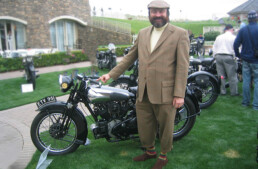Walking along the medieval streets of the storied town of Rhodes, Greece, the ancient and modern coexist in glaring contrast. Scattered at the feet of the 14th century Gothic gates of the Palace of the Grand Master are hundreds of sleek motorcycles. Inside the gates, behind time-worn limestone city fortifications, dozens more bikes owned by residents and workers sit in quiet corners of the cobblestone alleyways. A few years ago, Greece topped Italy and Switzerland to become the number one European Union country for motorcycle ownership. A gentle climate, a demographic skewed towards youth, and affordability have all fed the trend. Since 2014, Greek motorcycle ownership increased 0.5% year on year, with 150.24 Units per thousand persons. In 2019, the country was ranked number one compared to other EU countries in motorcycle ownership; Italy, Switzerland and Spain respectively ranked number 2, 3 and 4. The Motorcycles market in Greece is projected to generate a revenue of US$734.3M in 2024, and the BMW Motorrad is expected to have the highest market share there in 2024.














Love the juxtaposition of the ancient … and err … the sort of new 😉
Two thumbs up
.. but…. not to be pedantic or anything ……
… the H-D pictured above by all definition is not a chopper ….. that good sir despite the ever so slightly raked front end … is a Bobber . A very classic bobber indeed .
😎
A little primer from the man who was commissioned to do the research and literally write the book on the subject.
The only clear distinction/commonality defining the Chopper style is a raked steering head, whether from an aftermarket frame or a ‘chopped’ standard frame, which is what the machine in question has. And why I called it thus.
Bob-Jobs (or Bobbers in modern parlance) used stock frames, had no front fender, and shortened rear fenders, in imitation of Class C racers of the 1930s-50s. They remain popular, and two manufacturers currently offer Bobber models.
Before the 1934 creation of Class C racing, the same style of machines were called Cut Downs, or California Cut Downs, and I have photos of those going back to the early 1920s. And some Cut Downs had chopped frames (that happened around 1930, usually to Harley-Davidson JDHs), and were the true forbears of Choppers as they developed in the 1950s and 60s.